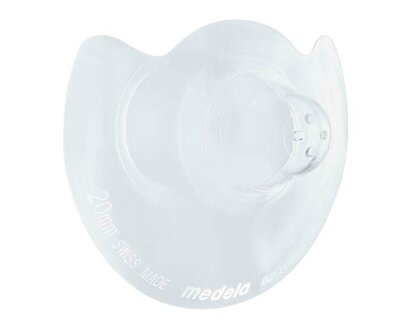
Hands-free Electric
Hands-free breast pumps with in-bra collection cups and a rechargeable battery for easy multi-tasking. Available in single or double cups.

Classic Electric
Classic electric breast pumps with 2-Phase Expression mimic natural sucking, helping mums express more milk in less time. Explore now!

Manual
Manual breast pumps are ideal for mums who express occasionally and need a lightweight, portable solution for travel. Discover now!

Symphony - No 1 Hospital Pump
Medela Symphony® is a reliable, multi-user breast pump for hospitals and home rental, ideal for long-term and frequent pumping.

Pumping garments
Explore Medela's Pumping Bras and Bustiers for effortless breastfeeding and pumping. Experience comfort and convenience. Learn more!

Maternity & nursing bras
Explore Medela's maternity bras and bralettes for nursing, designed for comfort and easy breastfeeding. Perfect for new and expectant mothers. Learn more!


Contact us
Need to contact Medela? Access our contact form and support options here. Explore now to get the assistance you need quickly.

Symphony Hub
Discover Symphony Hub, your online resource for easy, step-by-step pumping instructions. Save time and get the support you need with Symphony.

Rent a pump

Contact us
Need to contact Medela? Access our contact form and support options here. Explore now to get the assistance you need quickly.

Symphony Hub
Discover Symphony Hub, your online resource for easy, step-by-step pumping instructions. Save time and get the support you need with Symphony.

Rent a pump

Hands-free Electric
Hands-free breast pumps with in-bra collection cups and a rechargeable battery for easy multi-tasking. Available in single or double cups.

Classic Electric
Classic electric breast pumps with 2-Phase Expression mimic natural sucking, helping mums express more milk in less time. Explore now!

Manual
Manual breast pumps are ideal for mums who express occasionally and need a lightweight, portable solution for travel. Discover now!

Symphony - No 1 Hospital Pump
Medela Symphony® is a reliable, multi-user breast pump for hospitals and home rental, ideal for long-term and frequent pumping.

Pumping garments
Explore Medela's Pumping Bras and Bustiers for effortless breastfeeding and pumping. Experience comfort and convenience. Learn more!

Maternity & nursing bras
Explore Medela's maternity bras and bralettes for nursing, designed for comfort and easy breastfeeding. Perfect for new and expectant mothers. Learn more!

Freestyle™ Hands-free double electric wearable breast pump
Medela's firstwearable hands-free double electric breast pump, designed so you can carry on with other tasks while you're expressing.

Symphony® breast pump
The Symphony breast pump by Medela is a double electric hospital-grade breast pump available for rental.























